16 designs make the Prix Versailles 'World's Most Beautiful Restaurants' list
By Josh Niland|
Thursday, Jul 11, 2024

Related
The Prix Versailles just unveiled the World’s Most Beautiful Restaurants List for 2024. A group of 16 newly opened or reopened restaurants around the world that "have left an extraordinary imprint" were selected to compete later for three 2024 World Titles – Prix Versailles, Interior, and Exterior, which will be announced at the UNESCO Headquarters by late November.
"The World’s Most Beautiful Restaurants are a tribute to architecture and its commonality with people," Jérôme Gouadain, the Secretary General of the Prix Versailles, paid tribute. "In this regard, conviviality is magnified not only by the culinary experience but also by the singularity of the setting."
The Prix's other World Selections — including Emporiums, Airports, Campuses, Passenger Stations, and Sports — will be announced in September.
Ariana's Persian Kitchen by G.A Group
Dubai, United Arab Emirates
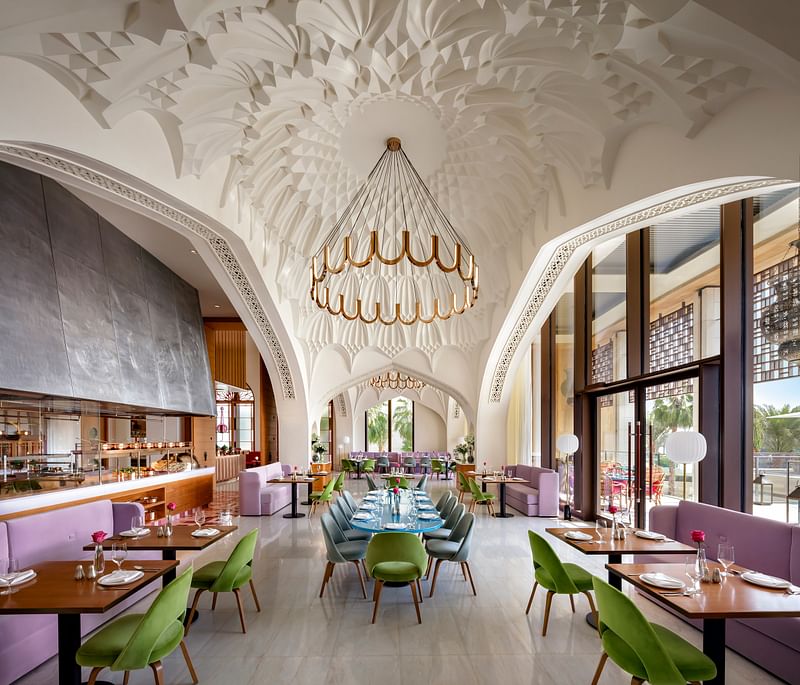
Project description: "In the deserts of Iran, Kashan is a sumptuous oasis that enjoyed a lengthy golden age thanks to the dexterity of its ceramicists. Chef Ariana Bundy hails from that city, where she renovated her 300-year-old house, before opening this new haven in Dubai. This history was the genuine source of inspiration for Ariana’s Persian Kitchen. The blazing colours – including the famous Kashan turquoise – and natural light play off the stained-glass windows and traditional screens, creating shimmering patterns on the white marble floor. Herbs and flowers are distilled here, in keeping with the restaurant concept, since rose water, mint, cinnamon and orange blossom in particular are time-honoured components of Iran’s pharmacopoeia. Guests’ senses open up to colourful, complex flavours: here, Ariana Bundy celebrates femininity in true splendour."
Reine & La Rue by Akin Atelier / Roger Beeston Architects
Melbourne, Australia
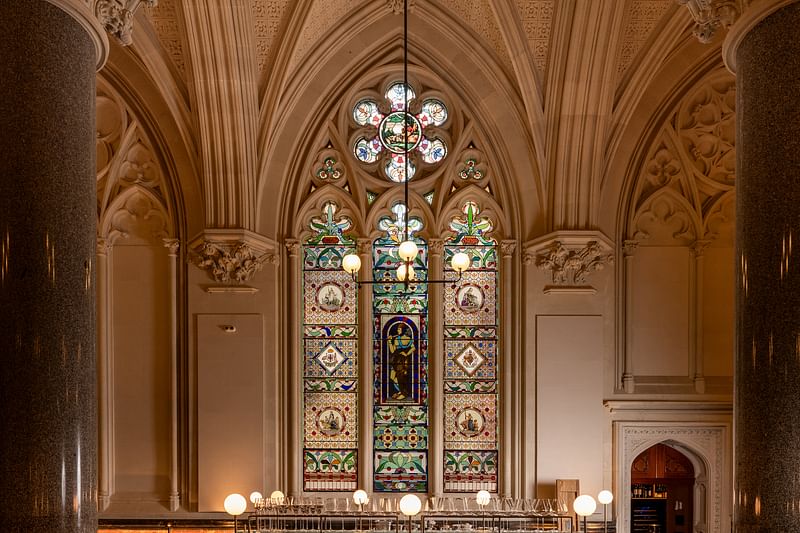
Project description: "Since 1891, the Melbourne Stock Exchange
had been an austere symbol of the city’s financial and legal district, at the corner of Queen
and Collins. That listed heritage building’s Cathedral Room – so-called for its Gothic architecture, which once housed the trading floor
– was abandoned for decades, up until the
arrival of Reine & La Rue.
The firms Akin Atelier and Roger Beeston Architects have fit an elegant restaurant with
130 covers into this monumental space, with
its own outdoor courtyard that seats 30 guests
and a small, refined wine bar (La Rue) with
eight stools. La Rue is a cosy space, in complete opposition to the grandeur of the dining
room. The understated, contemporary design
connects the symmetry of the columns with
the details on the ceiling and the main aisle. All
on a human scale, it provides a soothing counterpoint to the solemnity of the architectural
details and the staggering height of the space."
Tuju by Angelo Bucci / Raul Pereira
São Paulo, Brazil
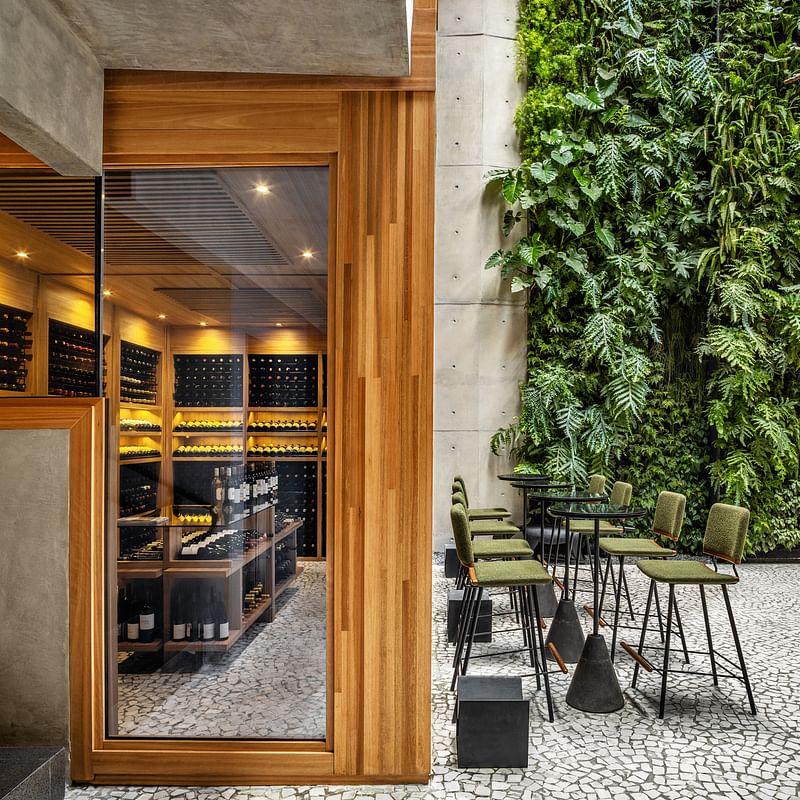
Project description: "In São Paulo, Chef Ivan Ralston defines his
cuisine according to the weather and the seasons, with expressively named menus like
Umidade, Chuva, Ventania and Seca. A bold
roadmap was entrusted to Angelo Bucci’s and
Raul Pereira’s architectural firms, to bring this
exciting concept to life.
Now, in a quiet street in the city’s Jardim Paulistano district, an elegant vertical garden rises
three storeys into the air and has become a
luxuriant parallel universe, wholly dedicated
to fine dining.
On the ground floor, a wine bar with glass
walls measuring five metres tall and an interior patio provide a cool oasis before guests
make their way to the dining room and open
kitchen on the first floor.
While weather conditions may determine the
contents of the tasting menu, the restaurant’s
furniture, wood and Brazilian design – with
features such as a whalebone box found in Ilhabela, pitu shrimp traps used in Bahia and a
bull skull brought back from Goiás – are there
all year round to lend character to the spaces
for wonderful nights out."
Cristal Room by Anne-Sophie Pic by Gilles & Boissier
Hong Kong, China
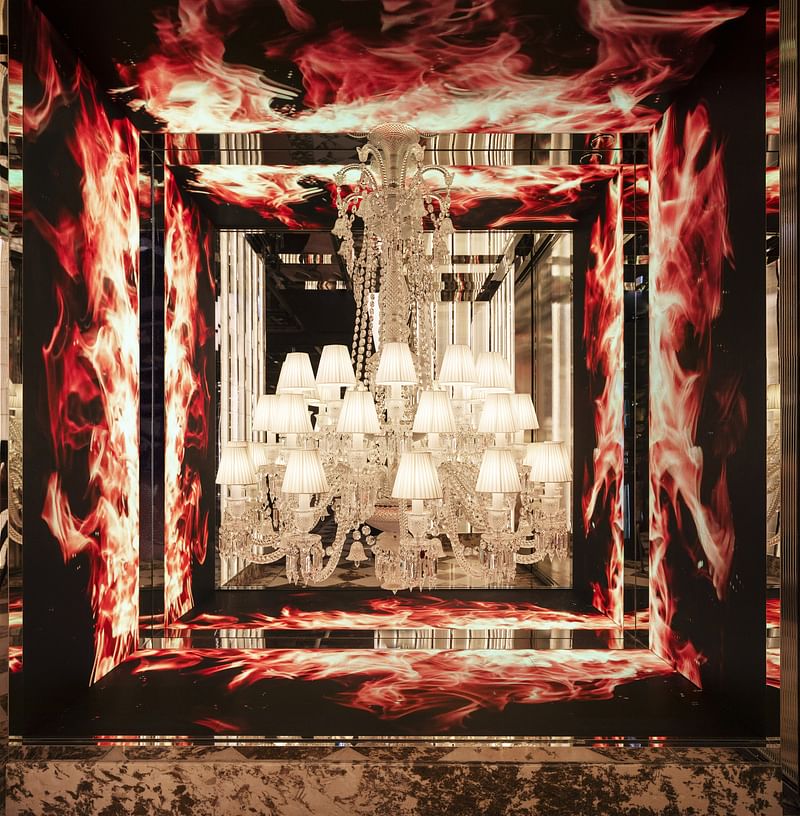
Project description: "In 1855, Baccarat – the manufacturer of fine
crystal – participated in the first Paris Exposition, where it won the Grand Medal of Honour.
170 years later, in the cosmopolitan city of
Hong Kong, Cristal Room by Anne-Sophie Pic
– the most decorated Michelin-starred female
chef in the world – represents a new explosion
of French art, engineering and craftsmanship.
For this restaurant, with its unbeatable view of
Victoria Harbour, the Gilles & Boissier design
office delivered a futuristic aesthetic born of
the way that crystal plays with light.
Upon entering, a fascinating chandelier comes
to life with reflections of mirrors seemingly engulfed in flames thanks to an optical illusion.
Fire, which is the element at the origin of all
Baccarat creations, helps to produce a mysterious and ethereal atmosphere that makes
the culinary spectacle truly captivating."
Tomacado by Liang Architecture
Hong Kong, China
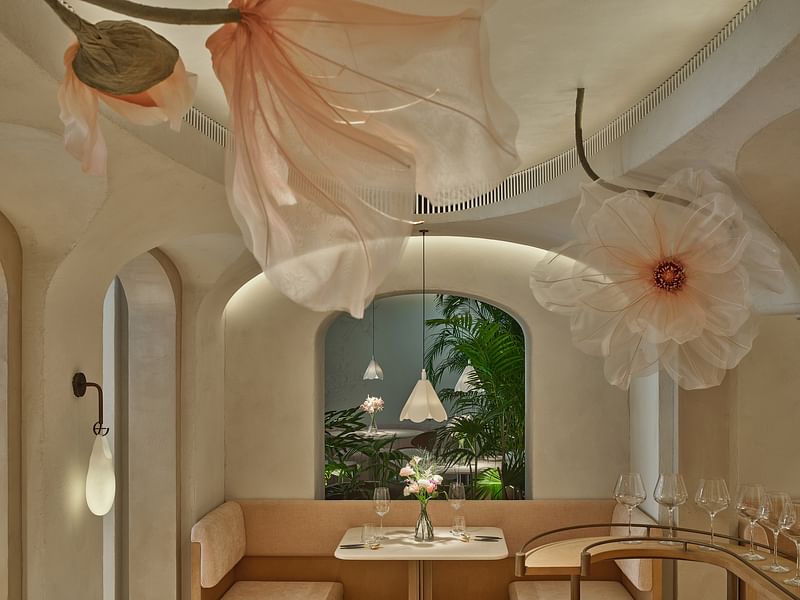
Project description: "Beijing, Shenzhen, Chengdu, Hangzhou, Shanghai and more… Tomacado’s concept revolves around 'one city, one flower, one restaurant, one theme.' For this new edition designed by Liang Architecture, the Hong Kong orchid (a local plant) was the source of inspiration for a garden area that is simultaneously grandiose and intimate. There, guests are immersed in a stylised, natural environment. The carefully arranged bouquets, majestic floral sculptures and larger-than-life paper blossoms in the dining room help contribute to the dreamlike ambiance. In fact, those not in the know would never guess that a restaurant is hidden away behind an artful and abundant florist’s window display. In this natural, fragrant and brazenly romantic atmosphere, the tables are laid out to suit each party’s story."
Virador Beach Club by Jorge Borja
Papagayo Peninsula, Costa Rica
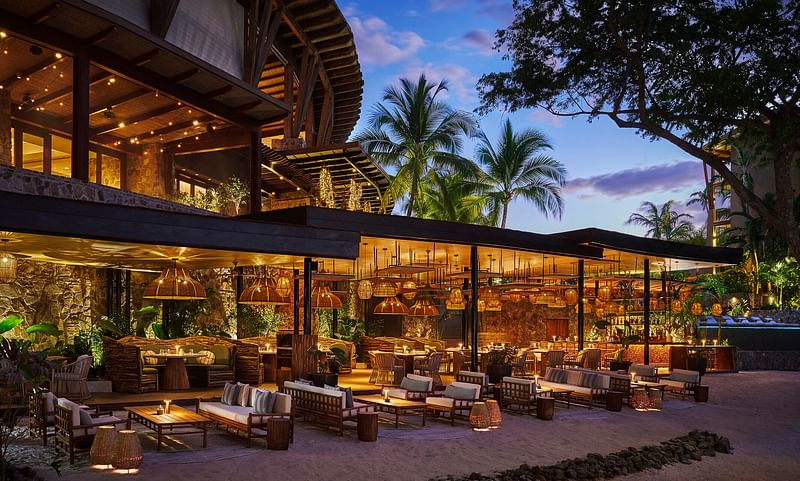
Project description: "Unless they’ve been there before, visitors will
undoubtedly think the Virador Beach Club,
which literally sits on the sand, has gone unchanged forever. How would they know that
the restaurant itself and the raised pool with
its private terrace are very recent creations?
The delicacy injected into this massive transformational expansion project was achieved
thanks to the humility of Mexican architect
Jorge Borja, who managed to meld the new
space with its surroundings, giving it the appearance of having always been there.
Still, the attentive eye can catch the subtle way
that contemporary materials like local stone
and wood enhance the property and underscore the leafy concept behind the structure.
From an experiential point of view, with its
Mexican and Costa Rican inspired architecture and its cuisine featuring Eastern Mediterranean flavours, the new Virador’s appeal
stems in part from its philosophy of immanence."
Blanc by Kengo Kuma & Associates
Paris, France
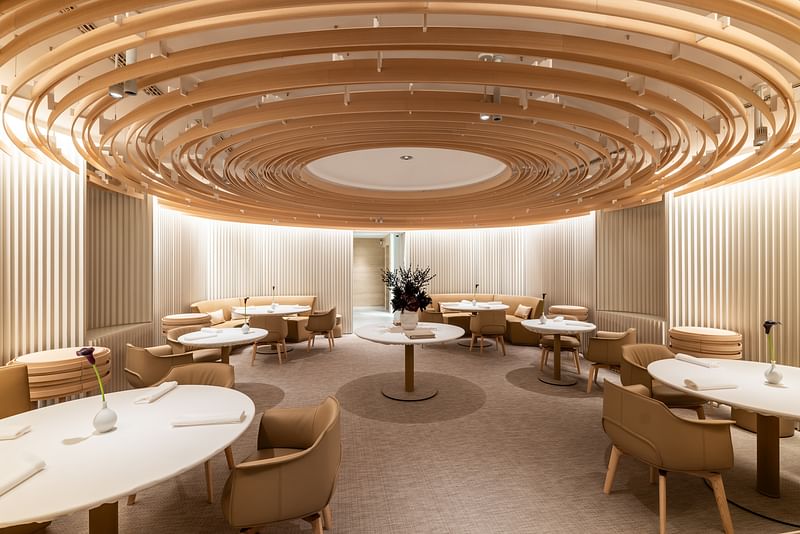
Project description: "The entrance on Rue de Longchamp would almost go unnoticed if it weren’t for the noble materials on its façade, in perfect harmony with the hewn stone above them. The architect Kengo Kuma enjoys immortalising Japanese traditions, know-how and materials, which he reinterprets for the 21st century. And this is precisely what he has done with Blanc and its Michelin-starred Chef Shinichi Sato. From the discreet threshold opening into a vestibule, a path created by the narrow, deep shape of the location gradually leads guests to a bar made of walnut, that sits plunged in semi-darkness. And then, at last, a burst of light. The main dining room, crowned by wooden vaulting and padded with baffles, lends itself well to engaging muted conversations and savouring the fine fare served in the latest tasting menu. Mystery and transparency? A table set up in a glass bubble in the middle of the kitchen treats guests to a theatre-worthy experience. A hallway bedecked in bronze using the yamato-bari technique extends the stage-like atmosphere into the private dining areas and the tasting room."
Ladurée Champs-Élysées by Malherbe Paris
Paris, France
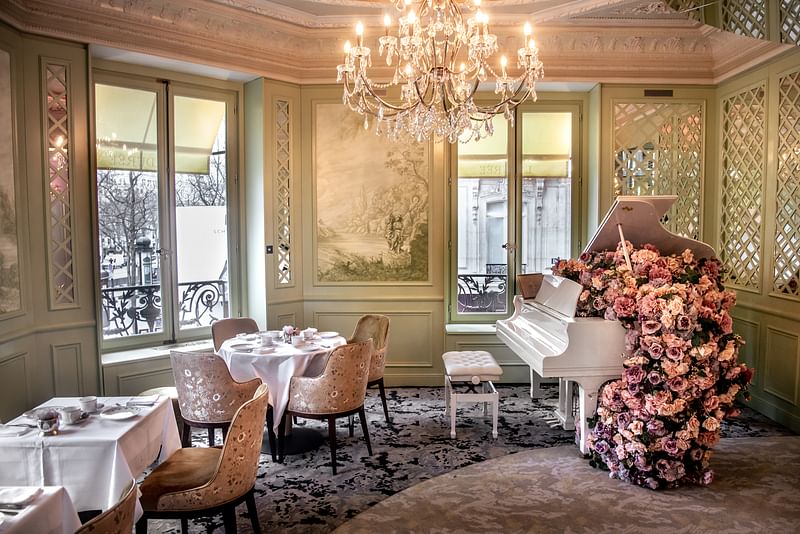
Project description: "At number 75 on the world’s most beautiful avenue, Maison Ladurée, which celebrated its 160th anniversary in 2022, shows us its vision of a distinguished lifestyle. In other words, each renovation of this iconic Parisian institution is comparable to a museum’s restoration of a masterpiece. Under these conditions, the Malherbe Paris design studio could not thumb its nose at a history that it had been tasked with elevating. The desire to create a real flower garden in the heart of the City of Light came to fruition with a floral-inspired living composition from the imagination of Anne Vitchen. A profusion of flowers is like an uninterrupted link to the Impressionists, in a gesture connecting the plant world to the Art Nouveau of the Belle Epoque. With its 180-seat restaurant, winter garden, music room, café area and dessert bar, Maison Ladurée – the ambassador of the Parisian macaron and inventor of the French-style tea room – is once again promoting a sensory notion of culture."
Riviera Fuga by JP Demeyer & co
Paris, France
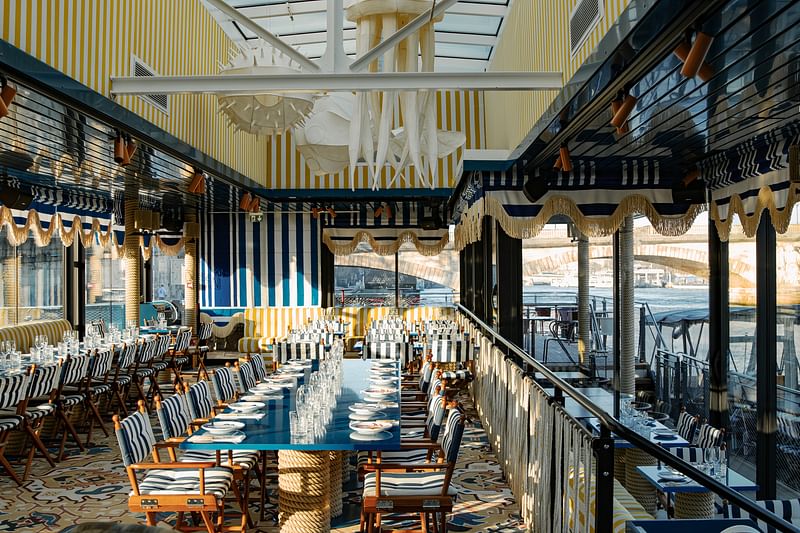
Project description: "Fuga is Latin for 'escape'… and what better way to escape than aboard a floating restaurant docked on the Seine? JP Demeyer & Co brought a piece of the French Riviera to the City of Light – and along with it some glamorous nostalgia – by playing with marled fabrics sporting bright blue or yellow stripes, reminiscent of the 1960s and 1970s awnings found on the Promenade des Anglais esplanade in Nice. On one deck, columns made of rope, varnished tables and boat chairs and loungers appeal to a yacht club spirit. The restaurant’s Italian-Japanese fusion cuisine also comes across in the immense rug whose burgundy, blue, mustard and dark green colours call to mind a large, stylised garden. This singular and deliciously out-of-the-ordinary ambiance makes diners feel like they have been transported into a bright, sundrenched postcard."
Beefbar by Humbert & Poyet
Milan, Italy

Project description: "Corso Venezia is the vibrant, historical heart of Milan. Of course it hosts plenty of boutiques, but above all it is home to impressive private mansions, gorgeous inner courtyards, sculpted façades and small parks and gardens where shoppers and residents alike can rest awhile. And it is here, at 11 Corso Venezia, in what was once the architect and designer Mario Bellini’s studio, that the architectural duo of Humbert & Poyet installed Beefbar Milan as a tribute to Italian cafés, inside a jewel of archiepiscopal architecture. Under the towering, vaulted ceiling of the nave, heritage and history are everywhere, giving the place a truly timeless feel. And still, this new creation by the Monaco-based firm – following Beefbar Paris and Beefbar Athens, amongst other projects – does justice to the chic, relaxed contemporary spirit of Italy today. In this way, it resonates with the creative city all around it, including Milan’s perpetual love of opera, fashion, architecture and design."
The Oreum by Space Dot
Goyang, Republic of Korea
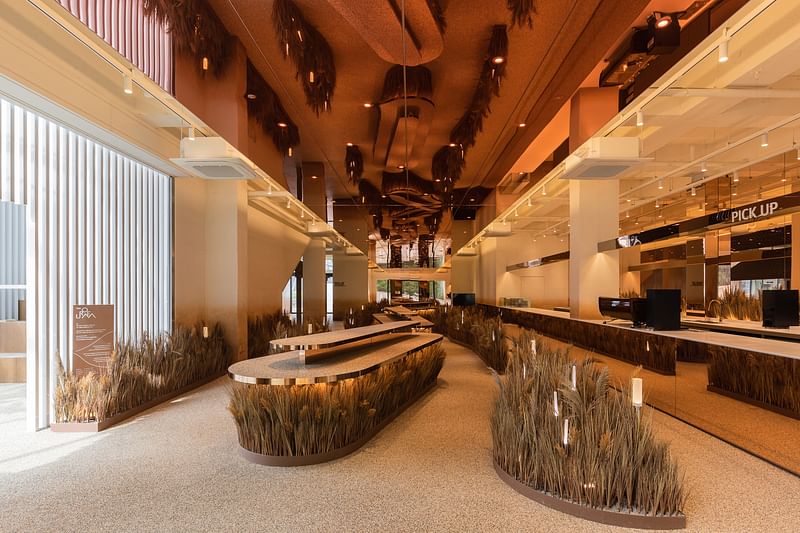
Project description: "For city dwellers in the densely packed city of Seoul who have grown tired of the concrete jungle and the daily grind, the Space Dot agency has created the illusion of an outdoor hike at The Oreum. Rising up from extensive beds of reeds on the ground floor, the central staircase – in a modern reinterpretation of a birch forest – leads to a space that looks like a mountainside cave, where water and mist shift and merge to soothe the senses. Farther upstairs, a sea of clouds unfurls in immaculate white. In the adjoining space, some 100,000 cloudlike objects made of mother-of-pearl are kissed by the ambient green light. More than just a place to rest and eat, The Oreum makes visitors feel like they are walking on air as a prelude to their culinary adventure."
Auyl by NAAW / Dunie Design
Almaty, Kazakhstan
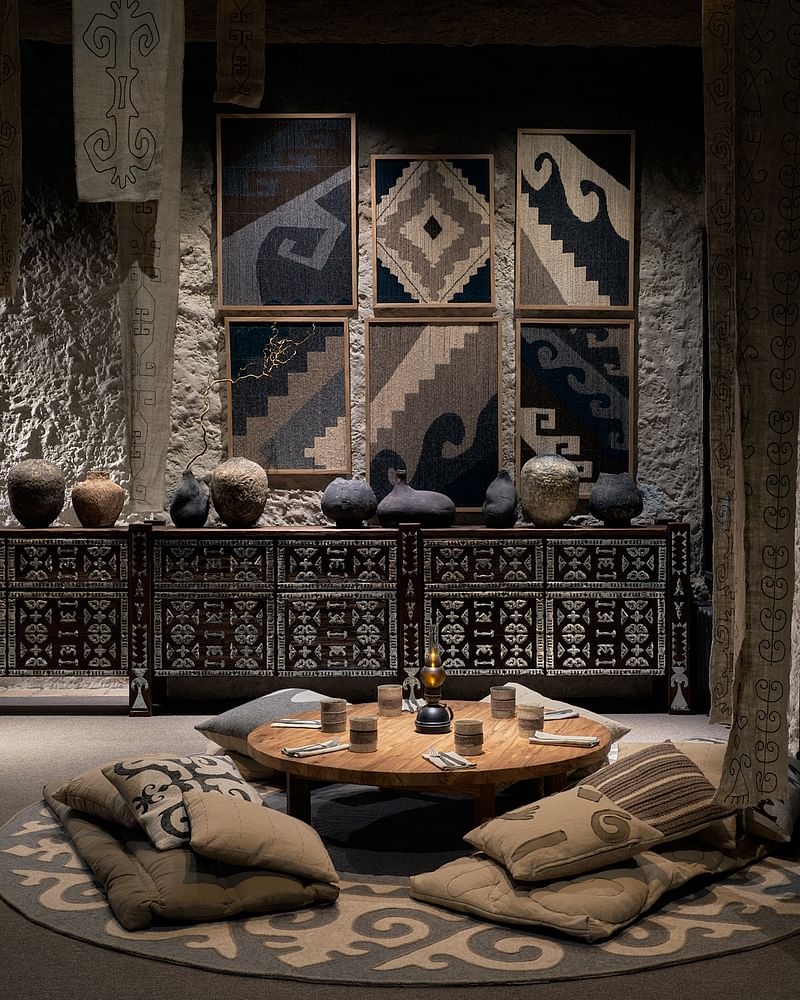
Project description: "Auyl provides a striking synopsis of Kazakh’s recent history and ancient culture, thanks to its location inside a monument inherited from Soviet modernism, a former residence where a dignitary of the socialist republic would receive foreign guests. Even more unusually, the structure was originally built in Aktau and only later relocated to the Medeu mountain district on the outskirts of Almaty. On behalf of Chef Ruslan Zakirov, the firms NAAW and Dunie Design have created breathtaking spaces around an open kitchen, with each one plunging visitors into a different immersion in the country’s age-old traditions. This stylised yurt feels almost sacred, as diners disappear like shadows in the soft lighting once they set foot inside. Serving a modern interpretation of Central Asian cuisine, inspired by nomadic and pagan traditions, Auyl is the perfect change of scene."
Madi Hiyaa by Nomadic Resorts
North Malé Atoll, Maldives
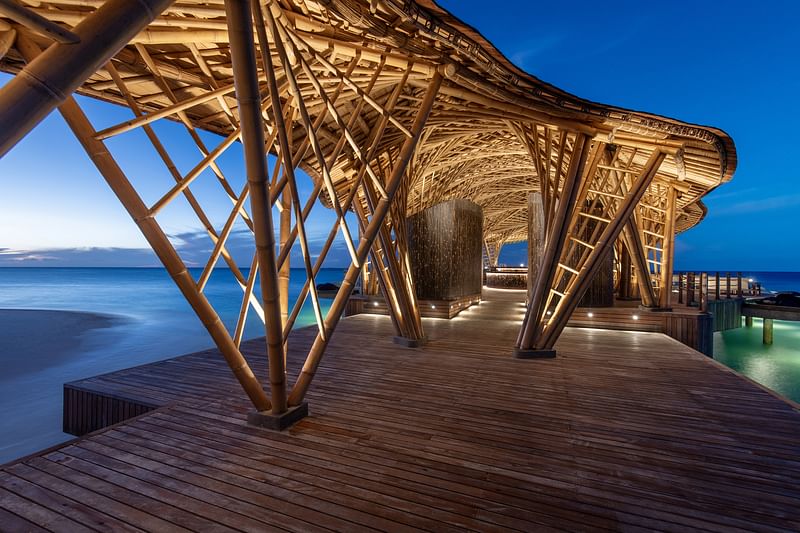
Project description: "The Ancient Greeks believed that the known world was surrounded by a world-encircling river, the Oceanus, with, at the outer reaches, the place where the human realm became uncertain, where mythical creatures would rise to the surface. Madi Hiyaa, at the edge of the world in the Maldives, offers a complete relationship with the scenery and universal mythologies, with a stylised structure endowed with amazing, contextual biomimicry inspired by the slinky silhouette of the pink whiprays (Pateobatis fai) gliding around the surrounding lagoon. Made of a series of paraboloid, hyperbolic columns and roof trusses, the bioclimatic bamboo frame is a reflection of the endoskeleton of those peaceful animals, with a looping, shingled tail running along the pier and connecting the building to the atoll to welcome visitors. With this restaurant in symbiosis with its natural environment, Nomadic Resorts has truly captured the spirit of the place."
Harudot by Idin Architects
Chonburi, Thailand
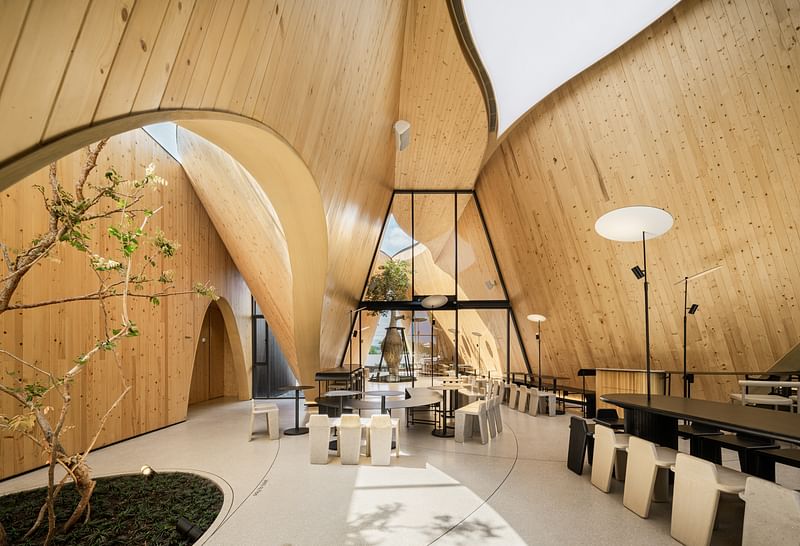
Project description: "Blending architecture, culture and nature is the pinnacle of any architect’s expertise, a skill that is all the more impressive when it involves a dining area, which is undoubtedly one of the most prototyped kinds of spaces in the world. Idin Architects took this challenge and ran with it, transcending conventional constraints to create Harudot, a coffee shop in the seaside city of Chonburi. The structure is the fruit of an amazing collaboration between the owner of the Nana Coffee Roasters chain and the owner of the plot of land on which it sits, who is a connoisseur of rare plants. Coffee shops can be places where lonely hearts may go to lose themselves. The elegance here is undogmatically spiritual, and Harudot is one of the spots in the world where everyone instinctively lowers their voice. Haru means “spring” in Japanese, while dot symbolises a starting point. The name itself is an invitation to dive into the sensual imaginary world of this unique location."
Nusara by TasteSpace
Bangkok, Thailand

Project description: "Architects often explain their desire to “frame exterior views”, the idea being to present the scenery outside like a painting for the visitors or occupants to admire. At Nusara, the firm TasteSpace transformed each window into a widescreen film of Bangkok temples and other architectural wonders. The paradox of this restaurant that focuses the eye on the outside world is that each of its indoor spaces – spread out over four storeys – is a sensory journey which celebrates Thai culture and craftsmanship. A “fabric library” in the reception area pay tribute to Chef Thitid Tassanakajohn’s seamstress grandmother. Everywhere guests look, textiles float gracefully and gold leaf patterns gleam discreetly, in a nod to the artistic traditions of Buddhism, imbuing the place with a sense of sacred art and a gentle glow. On each floor, customers are invited to explore a tapestry of flavours and design that celebrates the restaurant’s heritage and creativity."
Ilis by Grant Blakeslee
New York, NY
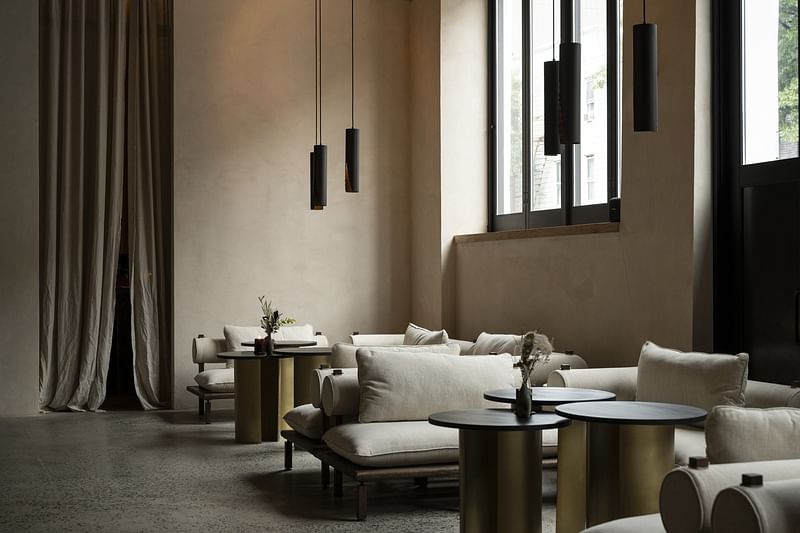
Project description: "When the Danish chef Mads Refslund came up with the idea of converting an old 420 m² industrial hangar in Brooklyn into a restaurant, he reached out to the Californian architect Grant Blakeslee with the challenge of disrupting all the usual conventions. Designing 'a show kitchen, a working machine' as the conceptual and physical nucleus of Ilis was an extraordinary exploit, providing a glimpse into a performance where chefs and servers become workers and artists, all of them starring in a dance between fire and ice (since Ilis takes its name from the Danish words for those elements). With no clear-cut distinction between back and front of house, conical sconces made of blackened brass and leather float from the high ceilings, illuminating each dining table like a spotlight for a meal surrounded by a scene of delightful, controlled chaos."

RELATED NEWS A look at the Prix Versailles 2023 World Titles winners

RELATED NEWS Prix Versailles honors world's best new retail and hospitality projects of 2023


Share
0 Comments
Comment as :